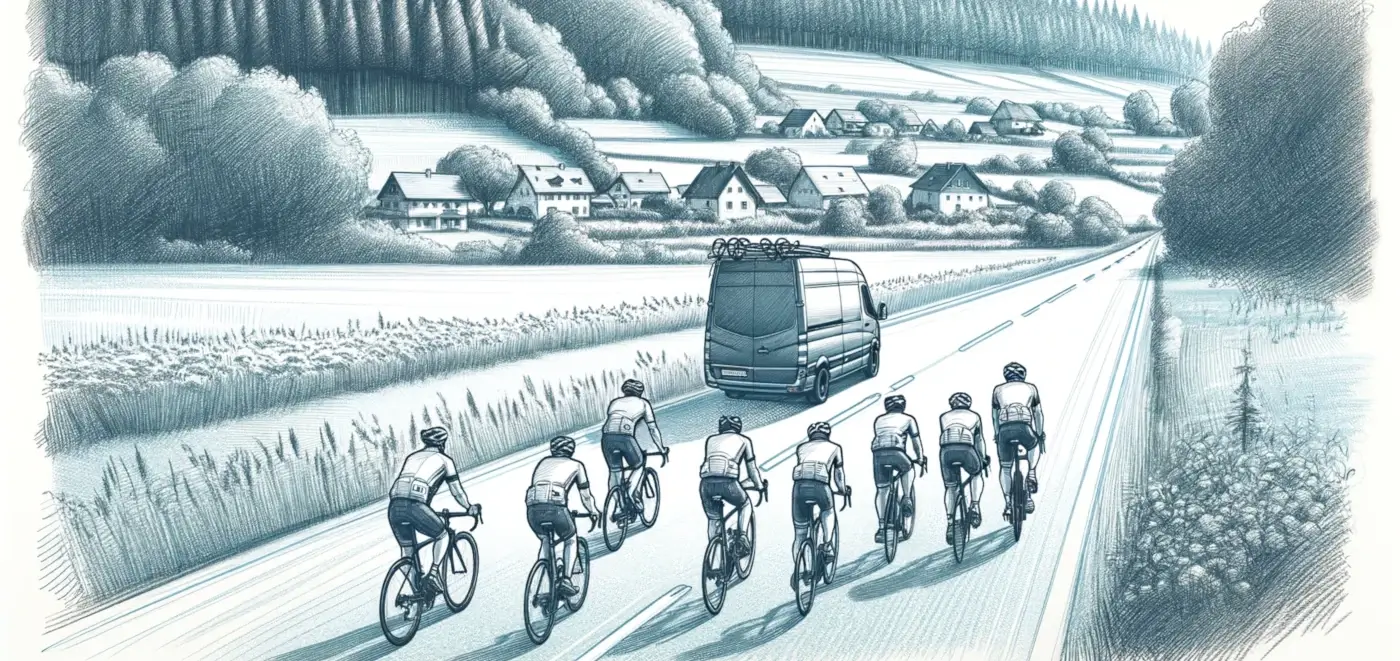Traveling by bike is a wonderful way to explore new places in a slow and immersive way, keeping fit and experiencing unique adventures, either alone or in company. But to fully enjoy a bike trip, it’s important to choose the most suitable formula for you and have physical preparation adequate for the chosen cycling tour.
Travel Formula
You can decide to organize your bike tour completely independently, or you can contact an agency expert in organizing cycling journey. In this case the main distinction will be between guided formula and self guided formula. Let’s discover the differences between these two different way of traveling by bike.

Guided organized bike tour
Characteristics
- Professional support. A guided tour is accompanied by one or more expert guides. These individuals not only know the route thoroughly, but are also trained to handle emergency situations, provide cultural and historical information, and assist in case of mechanical breakdowns.
- Logistic support. Typically, in a guided tour, all logistical aspects are managed by the organizer. This includes booking accommodations, meals, luggage transfers, and often vehicle support.
- Support vehicle. In addition of carrying your luggage, giving you access whenever you need, in case of any mechanical hiccups, the van is there to help you without slowing down the group. Plus, it ensures you’re well-stocked with water and food whenever you need it. And hey, if you’re having a tough day, don’t hesitate to ask for a lift – we’ve got you covered!
- Social interaction. Traveling in a group offers the opportunity to socialize and share the experience with other cycling enthusiasts.
Advantages
- Less worries. Reduces concerns about route planning, bookings, food and water provision, and potential emergencies.
- Richer cultural experience. Guides often share in-depth knowledge about the areas visited, enhancing the cultural value of the trip.
- Safety. The presence of experienced guides and vehicle support can offer a greater sense of security.
Disadvantages
- Less flexibility. There are fewer opportunities to explore independently or to modify the program at will.
- Cost. Generally, guided tours are more expensive than self-guided tours.
Self-Guided Organized Tour
Characteristics
- Autonomy. Cyclists follow the route at their own pace, making independent decisions about where to stop, what to explore, and where to stay overnight.
- Freedom and flexibility. Even if a basic itinerary is often provided, participants have the freedom to adapt the trip to their preferences and interests.
- Intimate experience. Ideal for those seeking a more intimate or personalized experience, either alone or in small groups of friends or family.
Advantages
- Flexibility. Greater freedom to explore, deviate from the planned route, and manage one’s own time.
- Customization. Possibility to adapt the trip according to personal interests and pace.
- Cost. Often cheaper, as it eliminates the cost of guides (fees, accommodation and travel expenses).
Disadvantages
- Greater responsibility. Requires attention in planning and managing the trip.
- Emergencies. In case of emergencies or mechanical breakdowns, the traveler does not have the immediate support of a guide and must be self-sufficient for minor interventions (like punctures, gear adjustments). For more serious emergencies, assistance can be requested from us, and we will provide all possible support, albeit remotely.
- Lack of cultural immersion. Without a guide, there might be a lack of naturalistic and cultural depth in the areas visited.
In summary, the choice between the two formulas depends on personal preferences related to flexibility, organizational and social support, independence, and costs. Both options offer unique and memorable experiences but cater to different travel styles and expectations.
Physical Preparation
It’s also crucial to have a good level of training, which varies depending on the daily length planned for the tour:
- About 50 km per day. For tours with short stages, it’s important to get used to long stays in the saddle. The pace of pedaling can be more relaxed, focusing attention on endurance rather than speed.
- About 80 km per day. In this case, in addition to endurance, it becomes important to sustain a good pedaling pace. Maintaining an average of about 20 km/h is ideal for completing the stage within daylight hours, thus balancing duration and intensity of the training.
- Over 100 km per day. For tours with long stages, it’s crucial to maintain a sustained pace over long distances. This requires more intensive training, focused on both endurance and speed.
Additionally, for those opting for an electric-assist bicycle, the necessary physical preparation is less. However, it remains important to prepare the body for staying in the saddle for consecutive hours, focusing on muscular endurance and flexibility to prevent discomfort or injuries.
The preparation slightly changes for trips on unpaved roads, such as gravel paths. These roads are technically more challenging and require more attention, leading to a slightly higher expenditure of nervous energy.
Finally, complete preparation for a bicycle trip includes being ready for emergencies. Knowing first aid techniques and having basic mechanical knowledge, such as gear adjustment or tube replacement, is essential. It’s equally important to be familiar with navigation devices and maps to avoid the anxiety of getting lost and to fully enjoy the trip, but in this, we provide you with full support, even if you travel self-guided.
Self guided tours we suggest as a first experience:



